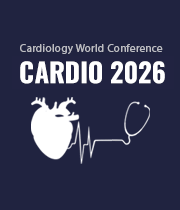Title : From uncertainty to clarity: Improving the acute management of hypertensive urgency to reduce cardiovascular pathologies
Abstract:
Introduction: Hypertensive urgency, defined as BP ≥180/120 mmHg without acute end-organ damage, is often mismanaged due to confusion with emergencies. This project assessed frontline staff knowledge to identify educational gaps and improve adherence to NICE and cardiovascular disease prevention guidelines in the acute management of hypertensive urgency.
Method: A retrospective audit was conducted in March 2025, reviewing patients presenting with severe asymptomatic hypertension in December 2024 and January 2025. An anonymised electronic survey was distributed to junior doctors, physician associates, and clinical fellows assessing their knowledge on BP thresholds, investigation, fundoscopy, and pharmacological management in the context of hypertensive urgency.
Results: Thirty-nine responses were analysed. While 87% of respondents correctly identified hypertensive emergencies, significant variation existed in medication selection for high-risk scenarios (e.g., suspected pheochromocytoma, pregnancy, cardiovascular risk, stroke risk). A retrospective audit was conducted in March 2025, reviewing patients presenting with severe asymptomatic hypertension in December 2024 and January 2025. An anonymised electronic survey was distributed to doctors assessing their knowledge on BP thresholds, investigation, fundoscopy, and pharmacological management in the context of hypertensive urgency.
Conclusion: Key educational gaps were identified in the recognition and safe management of hypertensive urgency. Planned interventions include a cardiovascular disease -focused educational poster and treatment algorithm, alongside fundoscopy workshops and targeted teaching sessions. These tools aim to support timely, safe decision-making and reduce preventable cardiovascular disease risk in frontline settings.



